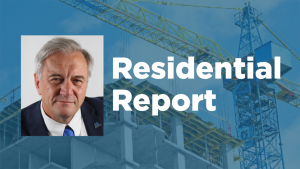This year witnessed a rare event in Ontario: The Insulators settled their collective agreement first among the trades.
The agreement? A zero-dollar increase over three years with no language changes. It’s an unprecedented combination of results.
For over a year, the union and contractors have been exploring breaks with tradition in order to enhance competitiveness and maximize work opportunities. For instance, earlier this year, they commissioned a joint research project exploring Binding Final Offer Selection (BFOS) arbitration as a dispute-resolution method. Now, they have settled first among the trades.
Rob McGowan Jr., chairperson of the Labour Advisory Committee with the Master Insulators’ Association of Ontario says, "Settling first, I think there was a general appetite from the union to get something done. They were aware of the business climate, certainly with what’s happened with the price of oil and what they’ve seen happen to their market in Alberta."
David Gardner, business manager of Heat and Frost Insulators Local 95 expanded on this, saying, "I went around the province and told the members the truth. I said this is the reason why we’re going down this path. The vote passed by a more than a 2:1 ratio. They understood."
Typically in the Ontario trades, the Insulators are among the last to settle.
The ECAO and IBEW, representing electrical contractors and workers respectively, usually settle first, setting a target anchoring negotiations for other trades.
Among the Insulators, both sides stat they felt that to remain competitive, a settlement based on market realities would have to be reached before a settlement in another trade muddied the waters and created pressures for outcomes that may not align with economic reality.
"Clearly if the Electricians were to settle for ‘X’ number of dollars, we might be 0.8X, so you have that target out there," says McGowan. "We think the Electricians’ market may be different from the Insulators’ market. Everybody has a good grasp of what our market is and we’re interested in protecting that market, which is why we did the agreement we did."
"I realize what the employers are facing," adds Gardner. "It’s a symbiotic relationship. They need us and we need them, because if they’re not getting work, I’m not putting my members to work."
Both sides reference difficulties in the industry in the next couple of years, including an oversupply of labour, a continuing reduction in large industrial projects and reduced client operating budgets.
"We understand that we may have some vulnerabilities in the trade," McGowan says. "Especially if you have lots of workers coming back from out west and a lot of people waiting to be employed, you have the creation of non-union companies. We’re seeing a lot of our membership solicited to do non-union work. The temptations are out there and it’s people realizing that we may have a good thing here and let’s look at maintaining it."
Where the Insulators used to benefit from the oil industry in Alberta, no similar option now exists.
"It’s been absolutely brutal since oil dropped," says Gardner. "Workers made $150,000 per year and now they’re back to the reality of minimum wage. That’s created a vacuum. There will just be a glut of [labour] supply. We’re facing the facts."
This settlement continues a pattern of exploring innovative initiatives related to bargaining including the examination of BFOS arbitration.
"The BFOS procedure got us to look at reality to get to where we are," Gardner says. "We had to face reality and we did. It got us to that point."
McGowan adds, "because we had gone a fair ways with the binding final offer selection, everybody was aware of some of the tools that were out there that could maybe help us if were to get into a spot."
"I give our union credit for the fact that we had some good, candid conversation to get to where we actually think the industry’s going to be," says McGowan.
"We’ve listened to our customers’ requests for stability in the marketplace and are doing our part to promote investment into the province."
The two sides have now started collaborating on initiatives to have workers job-ready.











Recent Comments
comments for this post are closed